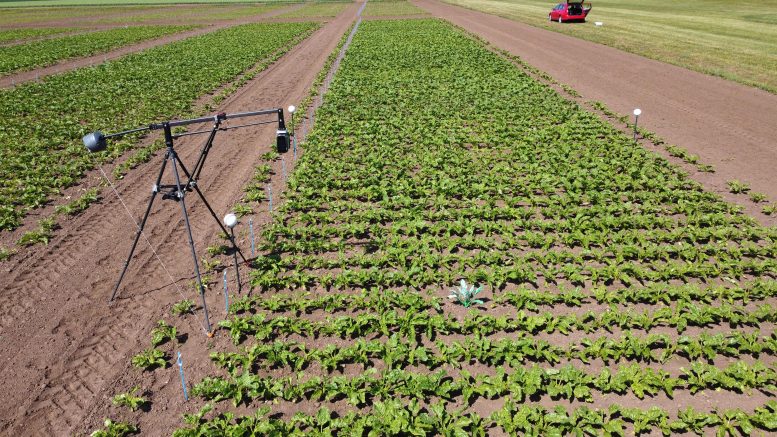
A 3D-printed reference model for sugar beet is included in field experiments. Credit: Institute of Sugar Beet Research, Göttingen
Scientists use laser scanning to generate 3D models of the above-ground parts of the sugar beet plant from a crop field, providing a step forward in developing AI-assisted crop pipeline improvement.
A demonstration of how new technologies can be used in 21st-century crop breeding comes from newly published research that combines Laser Scanning and 3D printing to create a detailed 3D model of a sugar beet plant. Taking the next step beyond having genetic information to guide intelligent breeding, the 3D plant models here capture the essential characteristics of the above-ground parts of the sugar beet plant and can be used for AI-assisted crop improvement pipelines. The sugar beet plant models are reproducible and fit for field use. All the research information, data, methodology, as well as the 3D printing files are freely available. Crop management is gaining much needed tools, and, of course, everyone can now print their own 3D sugar beet plant! (Minimum maintenance required.)
Improving Crops With Laser Beams and 3D Printing
Modern plant breeding is a data-centric enterprise, involving
In the past, phenotyping relied on measurements taken tediously by humans. Today, phenotyping pipelines are becoming more and more automated, using state-of-the-art sensor technology, often assisted by SciTechDaily